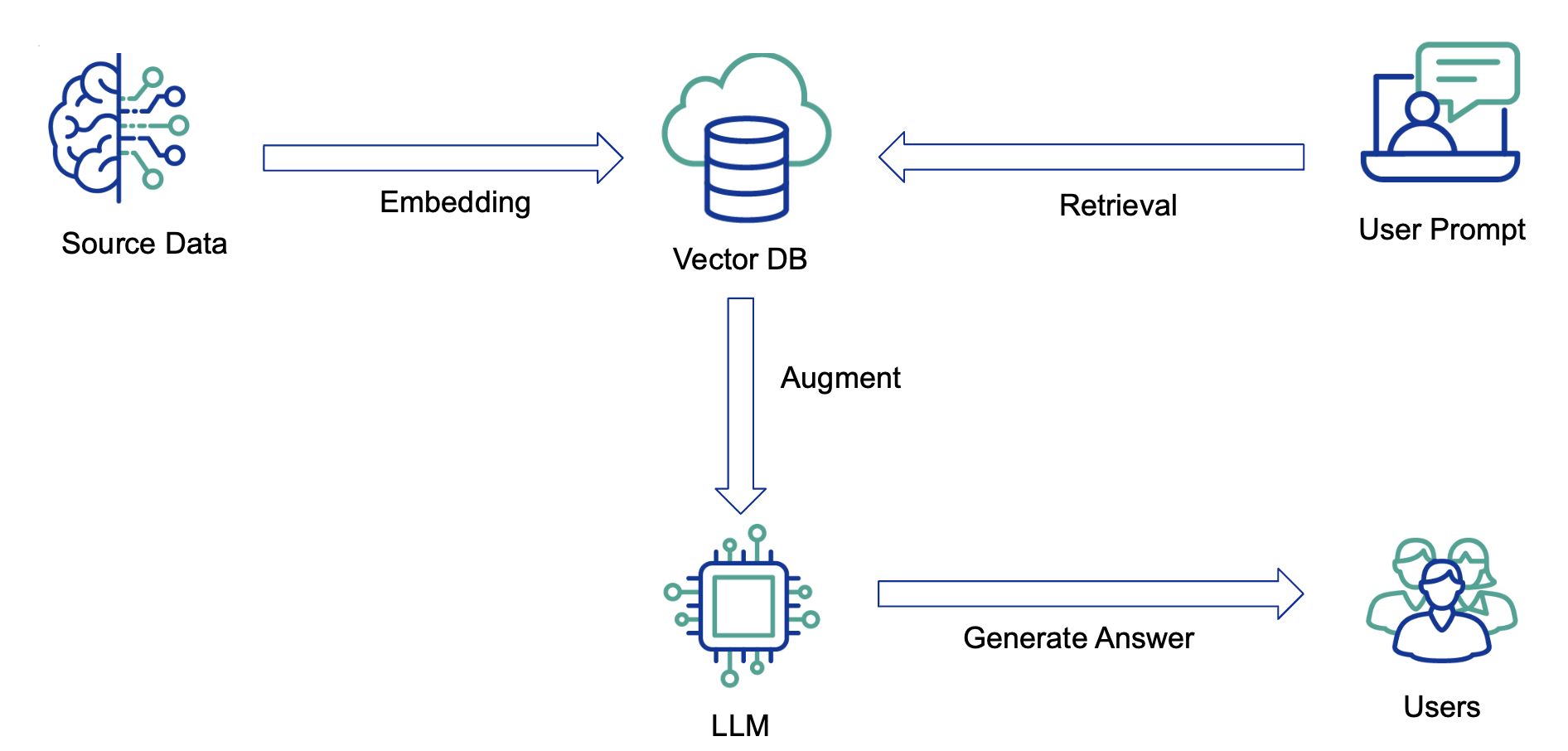AgentCreator Pipelines for Retrieval-Augmented Generation UseCases
Retrieval-Augmented Generation
Retrieval-Augmented Generation (RAG) is a technique in machine learning that combines the power of pretrained language models with the benefits of information retrieval systems to enhance the generation of text.
- Hybrid Approach
- Merges language models with retrieval systems.
- Function
- Enhances text generation by first retrieving relevant document excerpts and then conditioning the language model to generate outputs based on this retrieved information.
- Application
- Used in question-answering, chatbots, and anywhere where contextually rich and accurate text generation is critical.
- Advantage
- Provides more informative and contextually relevant text by leveraging a vast corpus of information beyond the language model's pretraining data.
The following diagram illustrates the flow of the user prompt using RAG.

Consider RAG as a helper for the LLM to create text. RAG first finds useful bits of information from a large set of documents and then uses them to help write new sentences that make sense and are full of meaningful details. This helps make the text more interesting and full of actual facts because it uses information from predefined sources of truth.
UseCase Articles and Evaluation Tutorial
The following articles describe different RAG use cases for AgentCreator:
- HR Demo: showcases the ease of effort to create RAG pipeline to power a chatbot.
- Legal contract analysis: offers a common, real-world scenario to showcase the RAG capabliities of AgentCreateor Snaps.
- Financial Portfolio Information Extraction from SEC Filings: demonstrates both RAG and intelligent document processing use case.
- Tutorial: Assess GenAI Application Quality with Evaluation Pipelines: Gives steps to build a pipeline that evaluates your RAG pipelines.


